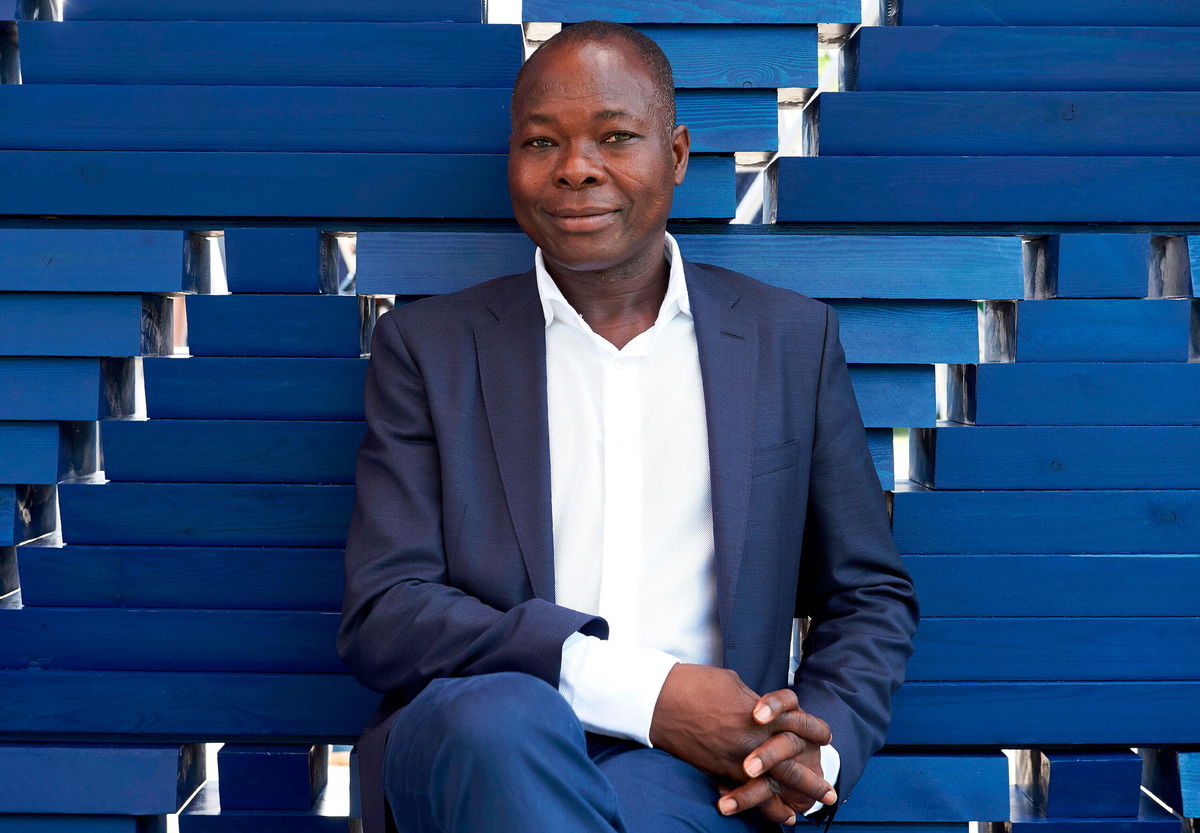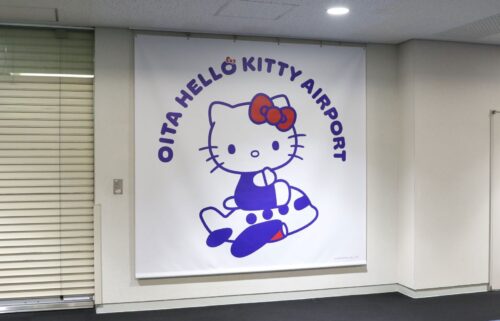Pritzker Prize 2022: Francis Kéré becomes first African to win ‘Nobel of architecture’

Burkinabe architect Diebedo Francis Kere
Oscar Holland, CNN
When he was 7 years old, Francis Kéré left his family home to attend school because his village, Gando in Burkina Faso, did not have one of its own. Thirteen years later he moved to Germany on a carpentry scholarship with a dream of returning home one day to build the classrooms that didn’t then exist.
Kéré achieved just that, becoming an architect and completing his first building, Gando Primary School, in 2001. The project proved to be a springboard for his career and still guides his ethos today. Having further transformed his village and other communities across Africa with his socially minded designs, the 56-year-old has now been named among the greats of his profession.
On Tuesday, organizers of the Pritzker Prize, often dubbed the “Nobel of architecture,” revealed Kéré as its 2022 laureate.
The first African architect to claim the award in its 43-year history, Kéré achieved the feat with a portfolio consisting largely of schools, health centers and community facilities — projects that might once have been considered too modest for a prize that has historically honored the designers of iconic buildings. Speaking to CNN shortly after hearing the news, he credited his success to his community in Gando.
“This is not just a prize for myself,” he said on the phone from Berlin, Germany, where he headquartered his firm, Kéré Architecture. “Without having the courage to go back home, and to get my people to join me on the journey to build the school that (launched) my career, this would never have been be possible.”
Casting mud like concrete and embracing local materials over imported ones, Kéré proposes a vision of architecture that both strengthens communities and responds to the climate crisis. As such, Tuesday’s Pritzker Prize announcement is not only a nod of approval for him, but for “vernacular” architecture — a term used to describe designs that directly respond to local climates, materials and building traditions — itself.
Though Kéré has since designed bigger projects, including large-scale campuses and two national parliaments, his approach remains grounded in principles established in Gando. Raising funds for the school from overseas, the architect returned to his village with plans for a contemporary and sustainable 5,600-square-foot facility. Knowing the village had no access to electricity or air conditioning, he proposed strategically placed windows that allow indirect sunlight to enter while generating airflow that serves as natural ventilation.
But despite collaborating closely with local craftspeople, Kéré said he faced resistance over his choice of materials. The use of traditional clay bricks, which — even when fortified with concrete — offer natural cooling, was not entirely welcomed by villagers, who thought the structure would not withstand the rainy season as well as glass and steel. The villagers’ instinct to conflate modern materials and notions of progress is something that the architect has encountered throughout his career.
“There is still a feeling that everything that’s local is primitive,” he said. “Let’s say 90% of people in Burkina Faso use clay, but they see it as a ‘poor person’s material.’ So, when they have more money to spend, they try to look for other materials.”
“Sometimes the Western world — and how it communicates — makes things in the West (appear to) be the best. And they are perceived by others to be the best, without taking into account that local materials can be the solution to the climate crisis and can be our best alternative in terms of socio-economic (development).
“The more local materials you use, the better you can promote the local economy and (build) local knowledge, which also makes people proud.”
Empowering communities
In the two decades since completing his breakout project in Gando, Kéré has realized plans for a village library, housing for teachers and a 2008 extension that significantly increased the school’s capacity. He has also adapted his approach to different contexts in Burkina Faso, where he has completed almost a dozen projects, and across the continent, from Senegal to Uganda, Togo to Sudan.
At the Benga Riverside Residential Community in Mozambique, Kéré incorporated existing baobab trees, shrubs and native grasses in his design, offering shade and protecting houses from dusty winds. His curvilinear SKF-RTL Children Learning Centre in Kenya, meanwhile, was built from compressed earth bricks that were produced on-site.
In each case, his work is as much about process as design. Working with local craftspeople not only imparts ownership over community buildings, Kéré said, but it helps develop vocational skills that can be used to generate future income. As this year’s Pritzker Prize jury, chaired by 2016 winner Alejandro Aravena, wrote of Kéré in its citation: “He knows, from within, that architecture is not about the object but the objective; not the product, but the process.”
Kéré’s background in carpentry makes him as much a builder as an architect. “Hand-crafting, and cutting or putting materials together, was something that fascinated me,” he said. “And I try — even without knowing it — to do the same with my architecture.”
Yet, he sees a growing divide between design and construction, believing that many of today’s architects are alienated from the processes that bring their visions to life.
“There’s a big disconnection,” Kéré said. “You have people just sitting in an office with a computer designing and shaping our world. This is not the best approach… If you have a big (architecture) firm, then it’s good to find a way to give people experience on construction sites.
“It doesn’t take a miracle; it’s possible. And we need to be aware that young professionals who (spend time) on construction sites, and really see how materials are put together, will have a different approach to design than those who just design on their computers.”
Growing profile
If Kéré’s philosophy is instinctively practical, he clearly recognizes the power of symbols and visual identities. Take, for instance, his recently completed Startup Lions Campus, an education center in northeast Kenya whose distinctive towers both aid ventilation and mimic the region’s termite mounds, rooting the structure in its surroundings.
Then there was the tree-inspired pavilion he designed for London’s Serpentine Galleries, which each year invites a leading international architect to produce a temporary installation. Part of a growing body of Kéré’s work outside Africa, the conceptual creation brought together various ideas underpinning his work, from perforated wooden blocks that produced natural air circulation to a rain-collecting canopy that alluded to the challenges of water scarcity.
Kéré’s growing international profile has invited increasingly monumental commissions. After Burkina Faso’s national assembly was destroyed during civil unrest in 2014, the architect was asked to envision a replacement in the country’s capital, Ouagadougou. The stepped facade of his pyramidical design offers both public space and a message of democratic openness, though the project remains on hold in the aftermath of January’s coup d’état.
Construction of another Kéré’s national assemblies, in neighboring Benin, is however underway. Like his Serpentine Pavilion, its top-heavy form was inspired by trees — in this case, West Africa’s palaver tree — and their role as traditional meeting places, with the parliament’s main volume blooming out from a hollow “trunk.”
In both cases, Kéré said, the challenge was to create uniquely African expressions of democracy, memory and identity. But while these national-scale projects differ in size from the architect’s schools and health centers, his approach remains rooted in localism.
“How do you make a project represent a nation? From a village to a nation state, you need to look around the country and ask, ‘Where do you have local and natural stone … and then we go to source it, in order (not to borrow) a style from somewhere else.
“This is how I’m trying to translate the work I have started in Gando to structures that present national pride.”
Kéré will officially be named Pritzker laureate at a ceremony in London later this year. As with previous winners, he will be awarded a $100,000 grant and a bronze medal.
The-CNN-Wire
™ & © 2022 Cable News Network, Inc., a WarnerMedia Company. All rights reserved.


